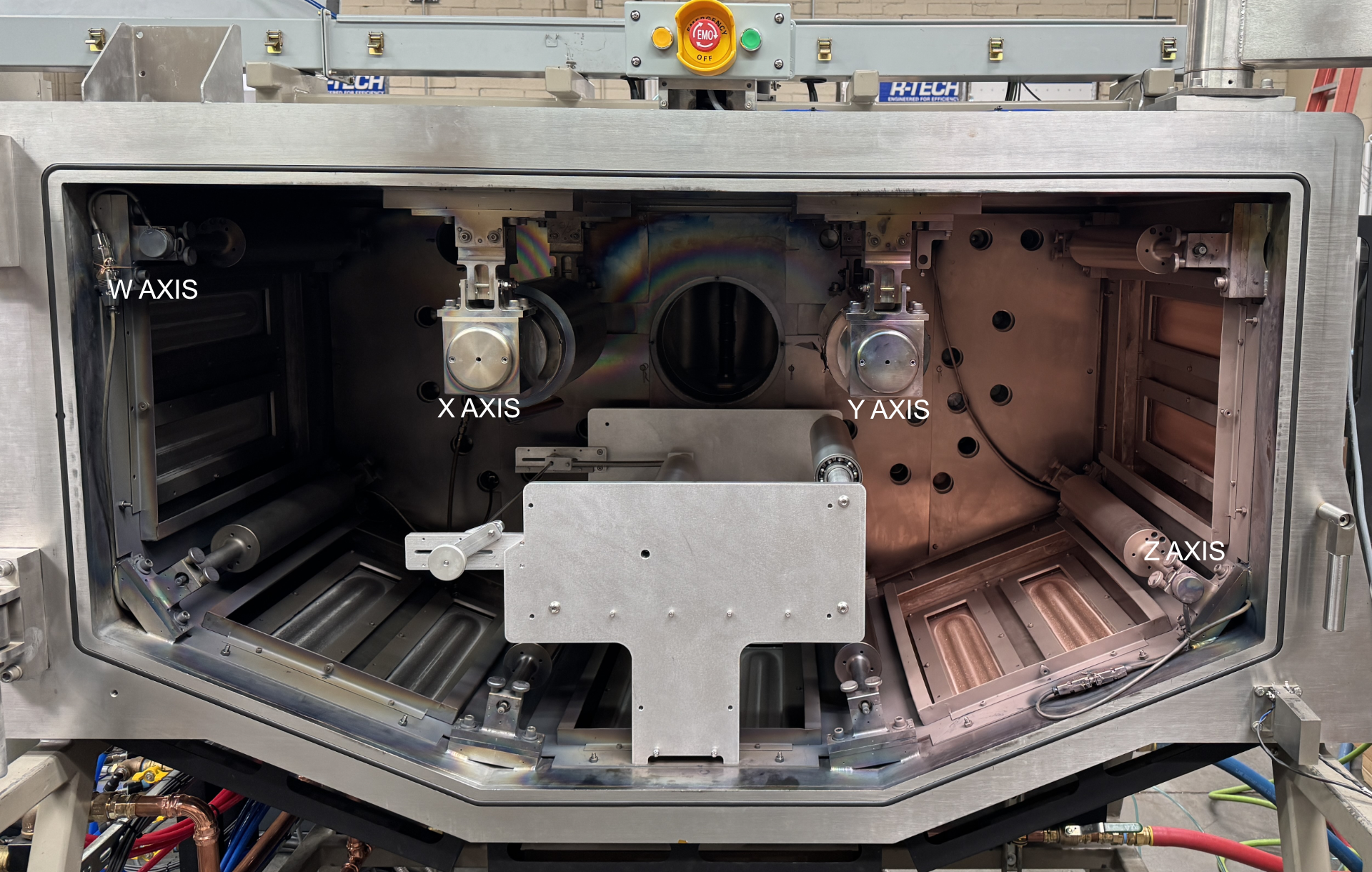State of the art Restomod of an old D-chamber web coater after sitting ten years in Arizona desert.
The D-Chamber after upgrades showing the interleaf and accumulator center bottom, and updated magnetrons and field shaper masks,
The old D-chamber system used was originally built to run stainless steel foil and the machine had been sitting unused in the desert of Arizona. GP Plasma’s customer needed a R2R coater within a startup capital budget that could deposit a range of coatings for a flexible solar application and the D chamber was sourced to provide the basis of a retrofit that would bring the machine up to state of the art - much like a restomod in the classic car market - blending the old with the new. As they only wanted to coat one side of the substrate, we needed to add an interleaf and accumulator system to prevent any front side contact with the substrate.
Final result: We are now running 125 um PET with less than +/- 5% uniformity!
The 10 magnetron system provided a good base for this D-chamber upgrade with GP Plasma delivering a rebuilt, state of the art tool for developing coatings for the solar market including:
1) Addition of interleaf and accumulator
2) Magnetron shaper masks to achieve cross web uniformity of less than +/- 5% (below the customers required +/- 10%).
3) New web drive system
4) Integration of Siemens SES/LCS modular solution for the machine control system.
5) Deposition of 5 coatings: SiO2, Si3N4, ITO, Ag, and Cu
6) Plasma pre-treatment.
7) Integrated Gencoa Optix for background gas monitoring.
Optimized Deposition Uniformity
Before Optimization: +/- 13%
Customer requirement: +/- 10%
Final as deposited result: less than +/- 5%
We needed to improve the cross-web uniformity of a customers planar cathodes. The as-built uniformity on a web roughly the length of the straightaways of the target was in the range of +/-13% due to the deposition rate drop-off at the turnarounds and the customer requited better than 10+/-% uniformity.
With the planar cathodes and surrounding deposition area modeled in COMSOL Multiphysics, static magnetic fields and electric fields were used to determine the Lorentz forces. The magnitude of these forces on the surface of the target was then used to generate a molecular flow model to simulate material deposition from the cathodes onto the substrate. While this was a good first-order uniformity plot that followed the trend of the measured uniformity on the web, it was more uniform than actual results due to the lack of a cross-corner effect.
Nevertheless, magnetron shaper masks were designed to improve the magnetic field uniformity by a factor of two (in the model) that translated directly to the measured results with a final uniformity achieved of less than +/-5%. An outstanding achievement and result for the customer.
For established companies and ones just starting out, making precious capital go further is always good for business. With years of experience in the industry, the GP plasma team applies their specialist knowhow in custom rebuilds of vacuum deposition equipment with state of the art capabilities, while supporting process troubleshooting and coating design & process optimization.


